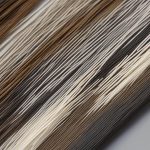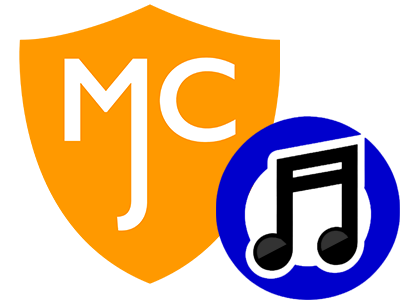
Hair tests for cannabis, also known as hair follicle tests, are one of the most effective methods for detecting drug use over an extended period of time. During this test, a small sample of hair is collected from the head, and the hair is analyzed to detect the presence of drugs such as cannabis. Hair tests can detect drug use up to 90 days after use, making it a preferred method of testing for many employers and organizations.
Passing a hair test is crucial for many individuals, particularly those who are seeking employment or are already employed and are subject to routine drug testing. A positive result on a hair test can result in negative consequences such as job loss, denial of employment opportunities, or legal repercussions. It is important for individuals to take the necessary steps to ensure they pass the hair test, regardless of the reason for the test.
Apple Cider Vinegar (ACV) is a natural detoxifying agent that is believed to have the ability to help individuals pass a hair test for cannabis. The acidic properties of ACV are thought to remove any residual drug toxins from the hair, reducing the chances of a positive result on the hair test. In this article, we will explore the science behind using ACV to pass a hair test, how to use ACV effectively, and the precautions to take while using this method.
Understanding the Hair Test for Cannabis
How the test works
A hair test for cannabis works by analyzing a small sample of hair for the presence of THC (tetrahydrocannabinol), the main psychoactive component in cannabis. When a person uses cannabis, the THC is absorbed into their bloodstream and then deposited into the hair follicles. The hair follicles then produce hair that contains traces of THC. During a hair test, the hair sample is analyzed using a sophisticated laboratory process to detect the presence of THC and determine the level of drug use.
Testing procedure
The hair test for cannabis is a straightforward and non-invasive process. During the test, a small sample of hair is collected from the head, typically about 1.5 inches in length and close to the scalp. The hair sample is then sent to a laboratory for analysis. The entire process takes only a few minutes to complete and can be performed at a healthcare facility or a designated testing center.
Detection times for Cannabis in hair
Hair tests for cannabis can detect drug use up to 90 days after use. This is because the hair grows approximately 1.5 cm per month, so a 1.5-inch hair sample can reveal drug use over a 3-month period. Unlike urine or saliva tests, hair tests do not detect recent drug use, but instead provide a historical record of drug use over a longer period of time.
Limitations of hair testing
While hair tests for cannabis are considered to be highly effective, they do have some limitations. One limitation is that hair tests can only detect drug use that has been absorbed into the bloodstream and deposited into the hair follicles. Therefore, hair tests may not detect drug use that has not been absorbed into the bloodstream or that has been used in low quantities. Additionally, hair tests may not detect all types of drugs, including some prescription and over-the-counter medications. It is important to keep in mind the limitations of hair testing and to consult with a professional if you have any questions or concerns.
How Apple Cider Vinegar can Help Pass a Hair Test
The science behind ACV and its impact on hair tests
Apple Cider Vinegar (ACV) is a natural detoxifying agent that is believed to have the ability to help individuals pass a hair test for cannabis. The acidic properties of ACV are thought to remove any residual drug toxins from the hair, reducing the chances of a positive result on the hair test. The science behind this method is based on the idea that ACV can alter the pH balance of the hair, making it more difficult for the laboratory to detect the presence of drugs.
How to use ACV to pass a hair test
- Preparing ACV solution
To prepare the ACV solution, mix equal parts of ACV and water in a bowl or container. It is important to use only natural, unprocessed ACV, as processed ACV may contain chemicals that can interfere with the test results.
- Using ACV on hair
Once the ACV solution is prepared, apply it to the hair, making sure to cover all the hair, including the roots and scalp. Leave the solution on the hair for at least 15 minutes, and then rinse thoroughly with water. It is important to repeat this process several times a week in the weeks leading up to the hair test to ensure the best results.
Precautions to take while using ACV
While ACV is a natural detoxifying agent and is generally considered safe, there are a few precautions to take when using it to pass a hair test. Firstly, ACV can be very acidic and can cause skin irritation or damage to the scalp. It is important to rinse the hair thoroughly after using ACV to avoid any potential skin irritation or damage. Additionally, some individuals may be allergic to ACV, so it is important to perform a patch test before using ACV on the hair. Finally, it is important to keep in mind that using ACV to pass a hair test is not a guaranteed method, and there is no guarantee that you will pass the test.
Other Methods to Pass a Hair Test
Detoxifying shampoos
Detoxifying shampoos are specifically designed to help individuals pass a hair test for drugs. These shampoos use various ingredients to remove drug toxins from the hair, including propylene glycol, vinegar, and baking soda. These shampoos are easy to use, and they work by removing the outer layer of the hair shaft, which contains the drug toxins. However, it is important to note that not all detoxifying shampoos are effective, and some may even contain harsh chemicals that can damage the hair.
Synthetic urine
Synthetic urine is a synthetic substance that is designed to mimic human urine and can be used to pass a drug test. This method works by replacing the individual’s urine sample with the synthetic urine, which does not contain any drug toxins. This method is easy to use and is readily available online. However, it is important to keep in mind that some laboratories have become more sophisticated in detecting synthetic urine, and there is a risk of getting caught using this method.
Hair transplantation
Hair transplantation is a surgical procedure that involves removing hair from one part of the body and transplanting it to another part. This method can be used to pass a hair test for drugs by transplanting hair that has not been exposed to drugs to the head, effectively replacing the hair that has been contaminated with drug toxins. This method is more invasive and expensive compared to other methods, and there is also a risk of complications from the surgical procedure.
Comparison of ACV with other methods
When comparing ACV with other methods for passing a hair test for cannabis, it is important to consider the level of invasiveness, cost, and risk involved with each method. ACV is a relatively inexpensive and non-invasive method, with low risk of complications. However, there is no guarantee that it will work, and results may vary from person to person. Detoxifying shampoos are a bit more expensive and also low-risk, but results may also vary, and not all shampoos are effective. Synthetic urine is a low-risk method that is easy to use, but there is a risk of getting caught, and it can be more expensive. Hair transplantation is the most invasive and expensive method, with a higher risk of complications, but it can provide a more permanent solution. Ultimately, the choice of method will depend on personal preference, budget, and the level of risk an individual is willing to take.
Risks and Precautions
Risks associated with using ACV
While using Apple Cider Vinegar (ACV) to pass a hair test for cannabis may seem like an easy and non-invasive solution, there are some risks associated with this method. ACV is highly acidic, and if not diluted properly, it can cause skin irritation and chemical burns. In addition, ACV can weaken the hair and cause it to become brittle and break, leading to hair loss. Furthermore, using ACV on the hair and scalp may alter the natural pH balance, leading to scalp dryness and dandruff.
Precautions to take while using ACV
To minimize the risks associated with using ACV, it is important to take some precautions. Firstly, always dilute the ACV before using it on the hair. Secondly, it is important to avoid getting the ACV solution in the eyes, as it can cause eye irritation. Additionally, it is recommended to limit the use of ACV to once or twice a week, as overuse can lead to hair damage.
Consultation with a doctor before using ACV
Individuals who have sensitive skin or scalp conditions, such as dandruff, should consult with a doctor before using ACV to pass a hair test. A doctor can provide guidance on the best approach to use ACV and assess the risks involved. Additionally, individuals who are pregnant, breastfeeding, or have any other medical condition should also consult with a doctor before using ACV.
Alternative methods for passing a hair test without ACV
For individuals who are unable to use ACV or are concerned about the risks associated with this method, there are alternative methods for passing a hair test. These include using detoxifying shampoos, synthetic urine, or hair transplantation. These methods come with their own risks and limitations, and it is important to research and compare the different options before making a decision. Additionally, it is always recommended to consult with a doctor before using any of these methods.
Tips for Ensuring Success
Importance of starting early
Starting the process of using Apple Cider Vinegar (ACV) to pass a hair test for cannabis early is crucial for ensuring success. Hair tests can detect cannabis use for several months, so it is important to start the ACV treatment several weeks or even months before the test. This will allow enough time for the ACV to effectively remove any trace of cannabis from the hair and reduce the chances of failing the test.
Regular use of ACV
Regular use of ACV is crucial for passing a hair test for cannabis. It is important to follow the recommended instructions for using ACV on the hair, including the frequency and duration of use. Using ACV once or twice a week for several weeks leading up to the test can increase the chances of success.
Proper care for hair during the test
Proper care for the hair during the test is important for ensuring success. This includes avoiding the use of hair products that may contain cannabis, such as hair gels or oils, as well as avoiding exposure to second-hand smoke. In addition, it is important to stay hydrated and maintain a healthy diet, as these can impact the health of the hair and scalp.
Staying hydrated
Staying hydrated is important for passing a hair test for cannabis. Drinking plenty of water helps to flush out any traces of cannabis from the body and can improve the health of the hair and scalp. In addition, staying hydrated can also help to improve overall health and reduce the risk of hair damage from using ACV.
Conclusion
Summary of the article
In this article, we have discussed the use of Apple Cider Vinegar (ACV) as a method for passing a hair test for cannabis. We have covered the process of hair testing, the science behind using ACV, as well as other methods for passing a hair test. We have also discussed the risks and precautions associated with using ACV, as well as tips for ensuring success.
Final thoughts and recommendations
While using ACV is one of the methods for passing a hair test for cannabis, it is important to keep in mind that there are no guarantees of success. It is always best to consult with a doctor before using ACV or any other method, to ensure that it is safe and appropriate for your individual needs. Additionally, it is important to follow the instructions and tips for using ACV carefully, as well as maintain a healthy lifestyle, to increase the chances of passing a hair test for cannabis.














